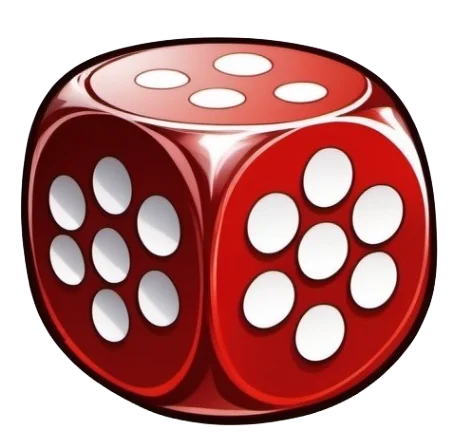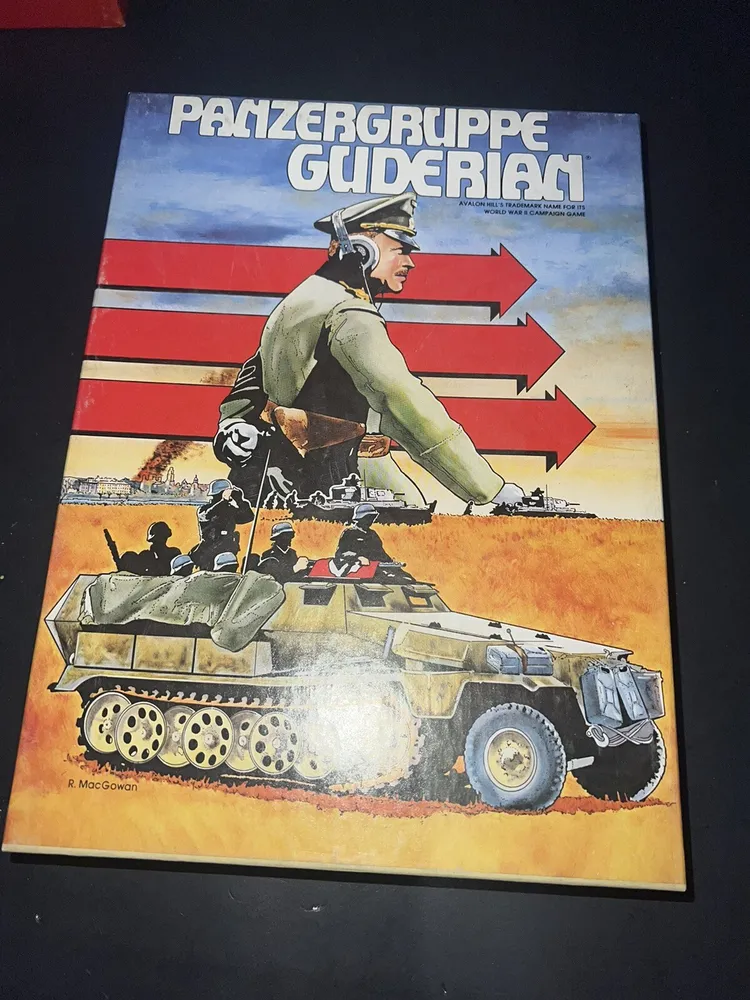Panzergruppe Guderian (1976)
Brief History and Background Information of Panzergruppe Guderian
“H2″Panzergruppe Guderian” is a board wargame published by Simulations Publications, Inc. (SPI) in 1976, designed to simulate the 1941 Battle of Smolensk during World War II. The game was designed by James F. Dunnigan, with cartography and graphic design by Redmond A. Simonsen. It first appeared as a pull-out game in Strategy & Tactics No. 57 (July–August 1976) and was later published as a flat-pack box and a Designer’s Edition boxed set. After TSR took over SPI in 1982, they sold the rights to “Panzergruppe Guderian” to Avalon Hill, which published a new edition of the game in 1984.
Why is Panzergruppe Guderian Popular?
“H2″Panzergruppe Guderian” is a popular and significant board game for several reasons:
– It was an advance in the state of the art for operational simulations of World War II.
– The game introduced innovative mechanics, such as the use of untried Soviet units. These units enter play face down, with their combat strength unknown to the player.
– The game system was quite innovative, featuring multiple movement phases for mobile German divisions.
Game Components of Panzergruppe Guderian
The Game Components of Panzergruppe Guderian include:
– Board
– Counters
– Rulebook
Game Setup of Panzergruppe Guderian
Prepare the board and place the counters on their starting positions.Determine the side to take (German or Soviet) and place the appropriate markers.Determine the order of play and begin the game.
Gameplay Mechanics of Panzergruppe Guderian
“H2″Panzergruppe Guderian” is a turn-based wargame. Each turn consists of several phases, including:
– Movement phase: Players move their units according to their movement allowance.
– Combat phase: Players resolve combat between opposing units.
– Retreat and Replacement phase: Players retreat their units and replace lost units.
Game Objective of Panzergruppe Guderian
The game’s objective is to achieve victory by controlling the most territory on the map.
Player Experience
Players enjoy “Panzergruppe Guderian” for its historical accuracy, innovative mechanics, and challenging gameplay. The use of untried Soviet units adds an element of uncertainty and strategy to the game, as players must balance the risk of revealing the strength of their units against the potential benefits of keeping them hidden.
Buy Online
You can find “Panzergruppe Guderian” and its expansions for sale on various online platforms, such as BoardGameGeek and The General.
Conclusion
“H2″Panzergruppe Guderian” is a highly regarded board wargame that offers a challenging and immersive World War II experience. Its innovative mechanics and historical accuracy make it a popular choice for wargame enthusiasts.
Game Components of Panzergruppe Guderian
How To Setup Panzergruppe Guderian
Setting up the game involves placing the German mechanized forces on the west edge of the map, while the Soviet units are placed with their strengths unknown. A Panzer Division is composed of one Panzer Regiment and two Mechanized Regiments, each identified by the same unit number. The Soviet player sets up their units with their “untried” side face-up, indicating unknown combat strengths. The game also includes specific phases for each player, starting with the Soviet player’s movement and combat phases, followed by the German player’s phases.
Gameplay Mechanics and Game Objective
– Soviet turn: Movement, combat, disruption removal, and air interdiction phases.
– German turn: Initial movement, combat, mechanized movement, disruption removal, and air interdiction phases.
Player Experience
**Panzergruppe Guderian** offers a challenging and dynamic gameplay experience. The German player must capitalize on their superior mobility and air power to achieve their objectives quickly, as the game clock ticks rapidly. The Soviet player, despite the unknown strengths of their units, must strategically manage their forces to counter the German advance. The game’s mechanics, such as the “untried” Soviet units and the asymmetrical turn sequence, add a layer of unpredictability and depth to the gameplay.
Pros
Cons
Personal Thoughts on Panzergruppe Guderian
**Panzergruppe Guderian** is a classic wargame that has stood the test of time, appealing to both veteran wargamers and those interested in World War II history. It is particularly suited for players who enjoy operational-level simulations and are looking for a game that combines historical accuracy with engaging and unpredictable gameplay. Despite some initial complexity, the game’s transparent rules make it accessible after a learning period. For those who appreciate the nuances of historical military strategy, **Panzergruppe Guderian** is a must-play experience.
We are supported by our audience. When you purchase through links on our site, we may earn an affiliate commission, at no extra cost for you. Learn more.

